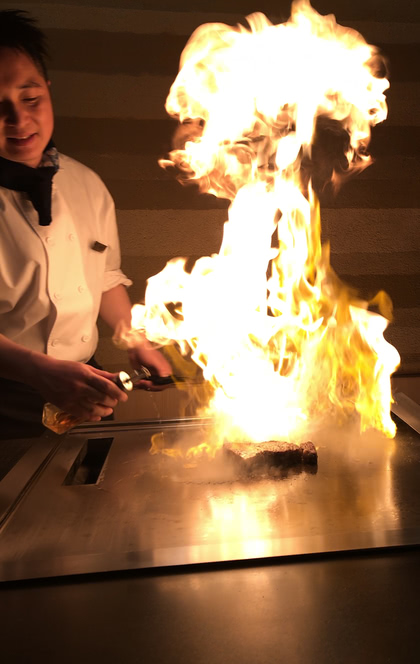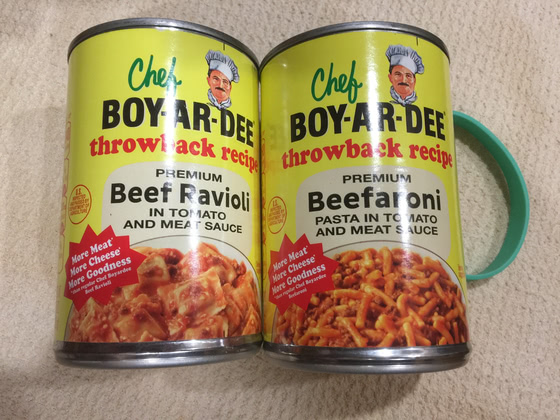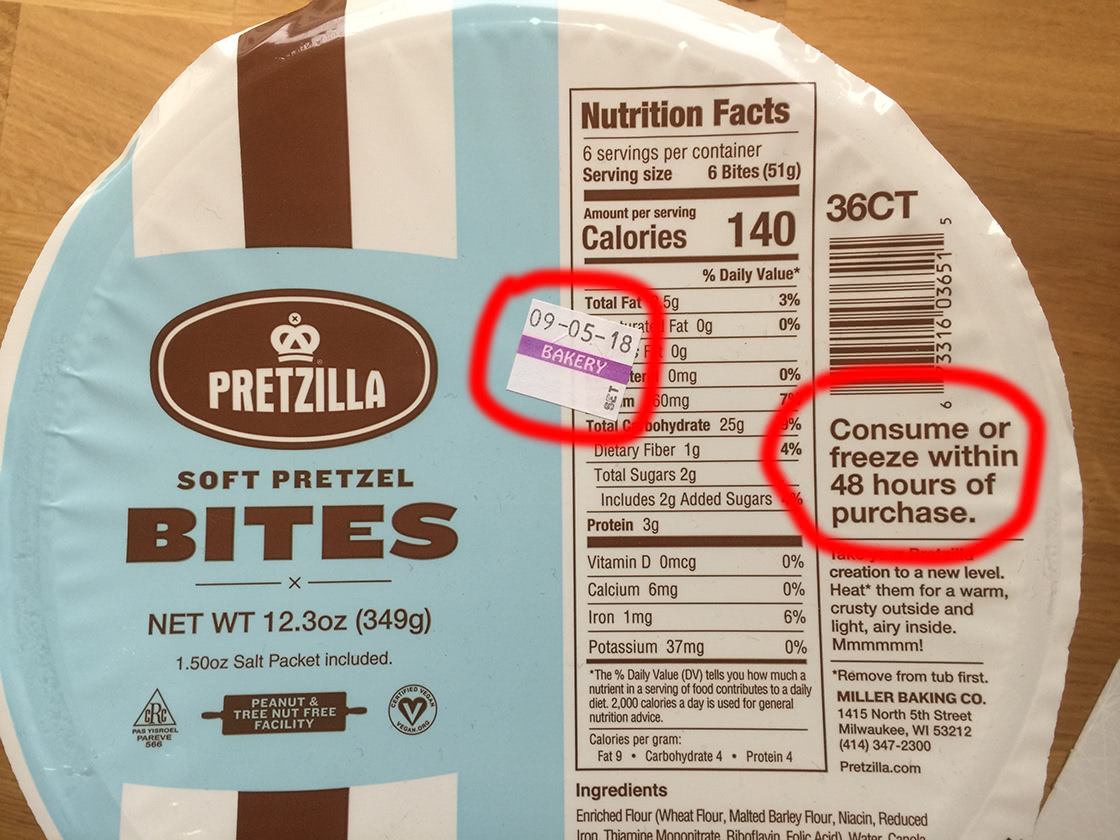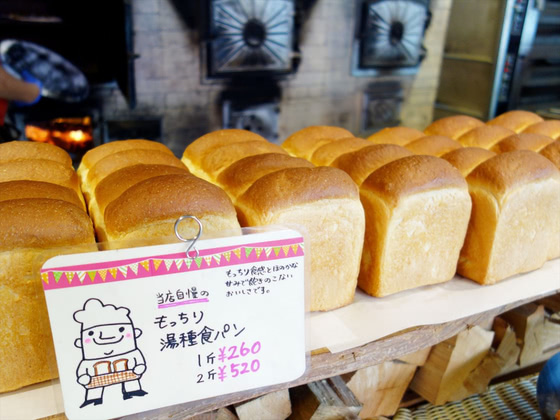Food
Hanaroku teppanyaki restaurant
Apple Maps is still pretty awful in Japan, so we never used it, but Google Maps had a habit of losing track of our position and facing just often enough to repeatedly send us a few blocks out of our way. It was also pretty terrible at recommending nearby restaurants. But it got it right once, and that’s what matters.
In Kyoto, in the basement of the Hotel Kanra, lies the home of what may be the finest meal we’ve ever eaten, Hanaroku. The menu is short, with only three courses and a handful of a la carte options, plus a separate daily special. The drinks menu is more elaborate, but both are seasonal, with the saké flights paired to the food. Preparation and presentation are exquisite, and the staff is quite friendly.

Not only will we go again, we did. We couldn’t stop thinking about the wagyu, so we went back another night and just ordered it a la carte with a full bottle of Kagura.

The best gyoza...
…is found in little side alleys. We already suspected this, but recent events have confirmed it.
Tenka Gyoza is dead; long live Tenpei Gyoza
It took us most of a week to get down to Osaka, only to discover that our favorite little third-floor hole-in-the-wall gyoza joint closed less than two weeks ago. We had gotten to Dotonbori around 1pm and checked to make sure her sign was still there, but since she didn’t open until 5, we didn’t go up until after we’d done our sightseeing and shopping.
Fortunately, there were two guys inside renovating for the new owner (sounds like it will just be a bar), and one of them knew that she’d retired and sold the place, and recommended we head back up toward Umeda station and try Tenpei.
We each devoured 50 hitokuchi (one-bite) gyoza too quickly to get a picture of them, but here’s their little English sign with a history of the place and the correct proportions for mixing up your own gyoza sauce:

I’d prefer to believe that the lady at the other place invented hitokuchi gyoza, but I’d need to spend a lot more time in Osaka researching the history of this most delicious incarnation of pan-fried dumplings. Tasty, tasty research.
If you want a higher filling-to-wrapper ratio, our other new find is a block up from Shijō off Karasuma in Kyoto, Tiger Gyoza Hall. They have a full menu for some reason, but if you just walk in and say “pukkuri gyoza, hakko”, you’ll be very happy. We’ve been there three times now, and I’m pretty sure there will be another visit before we leave town.
The unbelievably awesome teppanyaki restaurant Hanaroku deserves a post of its own…
Unrelated pro tip: if you use the new SmartEX app to purchase shinkansen tickets, guard that credit card with your life. If you somehow manage to lose the card (first time in my life…), you cannot pick up your tickets. At all.
The workaround is to use the app to cancel and resubmit your reservation with a different card, but this is not a practical solution when it’s the Friday afternoon where the entire country is going on vacation. The girl at the JR counter was politely apologetic, but didn’t think of what seemed obvious to me: have her place the order as soon as I hit the “cancel” button. Once we were synced up, we turned our keys and rebooked the same seats. Crisis averted, and there’s no sign that my card was used by anyone before I reported it lost.
Dieting tip...
After carefully determining that your pizza recipe is compatible with your new diet if you only eat half of it split across two meals, it’s important to put the other half away as soon as possible. Out of sight. Uncut. In someone else’s fridge.
I’m not worried about gaining weight while we’re in Japan, because last time it was just my sister and me, we averaged about 18 miles of walking per day, and Japan is not flat. A lot of my diet/workout plan right now is focused on my knees so I’m up to the challenge.
Sadly, my lasagna recipe isn’t compatible with any diet. Especially if I’m alone in the house with it. 😁
I'm a sucker for retro...
…not that I was buying canned food back when this was their current design…

Dry Curry is...
…Japanese Sloppy Joes. And not in a bad way.
Dear Safeway,
I is confused:

So which is it, 48 hours or five weeks? Are these pretzel bites ticking like a time bomb? Or is Pretzilla just encouraging the buyer to pig out?
[side note: Safeway has also started carrying Cheesecake Factory brown bread. For some reason, they stock both of these items near the in-store Starbucks at all the locations I’ve been in recently.]
Dayton-style Pizza
[work-in-progress]
Whenever I’m visiting family in Dayton, I will hoover up at least one Cassano’s or Marion’s pizza. Donatos and Ron’s are other chains that make Dayton-style, but it’s pretty much unknown outside the region, and often confused with St. Louis style.
The primary characteristics are a very thin crust (yeast dough, not cracker!), sauce and toppings all the way to the edge, salt and either cornmeal or semolina flour dusted on the bottom of the crust, and cut into small squares. Basically, if it takes more than two bites to eat a piece, you cut it too big. The difference between Cassano’s and its descendants is mostly based on when their founders stopped working for Vic and opened their own stores, although it seems Cassano’s has increased the amount of salt they use on the crust over the years, to the point that some people find it excessive (not me!).
In theory, you can get frozen Cassano’s shipped to you, but it’s not a real business for them, so they charge a ridiculous amount to get it to California. It would actually be cheaper to have a case of six shipped to my parents and then re-shipped by UPS.
So I’ve been working on making my own.
Even More Tangzhong-ing
A couple of days ago I stumbled across the German name for the Chinese dough-enhancing technique called Tangzhong: Mehlkochstück. That was amusing, especially since there were two other related German techniques that involved different ratios and temperatures (quellstück and brühstück), none of which had been translated into English.
Today, I stumbled across an article by the author of the BraveTart cookbook, insisting that the Japanese name for the technique was yukone. This came as a bit of a surprise to me, since it doesn’t match the kanji used by any of the Japanese bread companies I found recipes from (at least one of which punned on the name with “Ii yu da ne!”).
Bonus: yudane bread-machine mix.
Her source initially seemed persuasive, however: a Japanese research paper involving using an MRI to examine bread structure with and without the “water roux” paste.
Unfortunately, the paper is in English, and does not include the kanji for “yukone”. My guess is 湯粉練 (“hot water” + “flour” + “to thicken into a paste”), but plugging that into Google returns absolutely nothing in Japanese, and just 湯粉 returns soups. The hiragana ゆこね doesn’t work, either.
So now I’m wondering if the paper’s phrasing “a process known as yukone in Japanese” just means “jargon invented by our research team”. This is supported by the article’s citations, which include a much more recent paper with the translated title: “Effect of Heated Gluten on Bread-making Qualities of Yudane Dough”.
Also, unlike the typical 5:1 water/flour ratio in tangzhong or 2:1 in yudane, they used a 1:1 ratio, which really is papier-mâché paste.
Update
It’s yugone, 湯捏ね = “hot water” + “kneading”. Still no references on Amazon Japan, but the handful of recipes I found with those kanji used the same 1:1 ratio as the research paper. Some of them used “yugone” for the technique and “yudane” for the resulting starter.
Anyway…
If you’re in a Japanese bakery, look for 湯種食パン (yudane shokupan):

